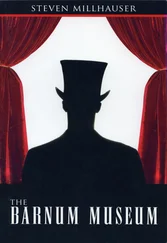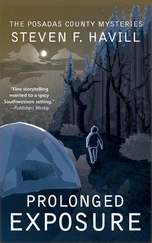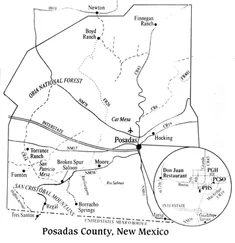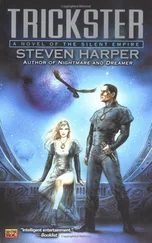Steven Dubner - Freakonomics
Здесь есть возможность читать онлайн «Steven Dubner - Freakonomics» весь текст электронной книги совершенно бесплатно (целиком полную версию без сокращений). В некоторых случаях можно слушать аудио, скачать через торрент в формате fb2 и присутствует краткое содержание. Жанр: Старинная литература, на русском языке. Описание произведения, (предисловие) а так же отзывы посетителей доступны на портале библиотеки ЛибКат.
- Название:Freakonomics
- Автор:
- Жанр:
- Год:неизвестен
- ISBN:нет данных
- Рейтинг книги:3 / 5. Голосов: 1
-
Избранное:Добавить в избранное
- Отзывы:
-
Ваша оценка:
- 60
- 1
- 2
- 3
- 4
- 5
Freakonomics: краткое содержание, описание и аннотация
Предлагаем к чтению аннотацию, описание, краткое содержание или предисловие (зависит от того, что написал сам автор книги «Freakonomics»). Если вы не нашли необходимую информацию о книге — напишите в комментариях, мы постараемся отыскать её.
Freakonomics — читать онлайн бесплатно полную книгу (весь текст) целиком
Ниже представлен текст книги, разбитый по страницам. Система сохранения места последней прочитанной страницы, позволяет с удобством читать онлайн бесплатно книгу «Freakonomics», без необходимости каждый раз заново искать на чём Вы остановились. Поставьте закладку, и сможете в любой момент перейти на страницу, на которой закончили чтение.
Интервал:
Закладка:
2. HOW IS THE KU KLUX KLAN LIKE A GROUP OF REAL-ESTATE AGENTS?
UNMASKING THE KU KLUX KLAN: A number of excellent books have been written about the Ku Klux Klan. For general history, we relied most heavily on Wyn Craig Wade, The Fiery Cross: The Ku Klux Klan in America (New York: Simon & Schuster, 1987), and David M. Chalmers, Hooded Americanism: The First Century of the Ku Klux Klan, 1865–1965 (Garden City, NY: Doubleday, 1965); see also Stetson Kennedy, After Appomattox: How the South Won the War (Gainesville: University Press of Florida, 1995). Of most particular interest to us was Stetson Kennedy, The Klan Unmasked (Boca Raton: Florida Atlantic University Press, 1990), which was originally published as I Rode with the Ku Klux Klan (London: Arco Publishers, 1954). But Stetson Kennedy himself is probably the greatest living repository of Klan lore. (For more information, see www.stetsonkennedy.com; also, many of Kennedy’s papers are housed in the Schomburg Center for Research in Black Culture in New York.) The authors visited Kennedy at his home near Jacksonville, Florida, interviewing him and availing ourselves of his extensive collection of Klan paraphernalia and documentation. (We also tried on his Klan robes.) We are most grateful for his cooperation. The Harvard economist Roland G. Fryer Jr. accompanied us; he and Steven Levitt are currently collaborating on a series of papers about the Ku Klux Klan. It should be noted that Fryer was driving the rental car as we first sought out Kennedy’s house on a sandy back road. We stopped to ask a neighbor for directions. Kennedy is still considered an enemy in Klan circles, and the neighbor was plainly protective of Kennedy’s whereabouts. So he peered into the car—
directly at Fryer, who is black—and in all earnestness asked, “Y’all ain’t Klan, are ya?” Fryer assured him we were not.
WHAT HAPPENED TO TERM-LIFE RATES? See Jeffrey R. Brown and Austan Goolsbee, “Does the Internet Make Markets More Competitive? Evidence from the Life Insurance Industry,” Journal of Political Economy 110, no. 3 (June 2002), pp. 481–507.
SUPREME COURT JUSTICE LOUIS D. BRANDEIS writing that “Sunlight is said to be the best of disinfectants”: See Louis D. Brandeis, Other People’s Money—
and How Bankers Use It (New York: Frederick A. Stokes, 1914).
THE BRAND-NEW USED-CAR CONUNDRUM: This thesis, and indeed much of what we think today about “asymmetric information,” stems from a paper that George A. Akerlof wrote during his first year as an assistant professor at Berkeley in 1966–67. It was rejected three times—two of the journals told Akerlof that they “did not publish papers on topics of such triviality,” as he later recalled—before being published as George A. Akerlof, “The Market for
‘Lemons’: Quality Uncertainty and the Market Mechanism,” Quarterly Journal of Economics, August 1970. Some thirty years later, the paper won Akerlof the Nobel Prize in Economics; he is widely considered the nicest man to have ever won the award.
THE ENRON TAPES: As of this writing, the tapes could be heard on http://
www.cbsnews.com/stories/2004/06/01/eveningnews/main6_20626.shtml. See also Richard A. Oppel Jr., “Enron Traders on Grandma Millie and Making Out Like Bandits,” New York Times, June 13, 2004.
ARE ANGIOPLASTIES NECESSARY? See Gina Kolata, “New Heart Studies Question the Value of Opening Arteries,” New York Times, March 21, 2004.
THE REAL REAL-ESTATE STORY, REVISITED: See Steven D. Levitt and Chad Syverson, “Market Distortions When Agents Are Better Informed: A Theoretical and Empirical Exploration of the Value of Information in Real-Estate Transactions,” National Bureau of Economic Research working paper, 2005.
TRENT LOTT, NOT-SO-SECRET SEGREGATIONIST? The circumstances surrounding Lott’s damaging comments are well summarized in Dan Goodgame and Karen Tumulty, “Lott: Tripped Up by History,” Time.com/cnn.com, December 16, 2002.
THE WEAKEST LINK: See Steven D. Levitt, “Testing Theories of Discrimination: Evidence from The Weakest Link,” Journal of Law and Economics 17 (October 2004), pp. 431–52. / 79 The theory of taste-based discrimination originates with Gary S. Becker, The Economics of Discrimination (Chicago: University of Chicago Press, 1957). / 79 The theory of information-based discrimination is derived from a number of papers, including Edmund Phelps, “A Statistical Theory of Racism and Sexism,” American Economic Review 62, no. 4 (1972), pp.
659–61; and Kenneth Arrow, “The Theory of Discrimination,” Discrimination in Labor Markets, ed. Orley Ashenfelter and Albert Rees (Princeton, N.J.: Princeton University Press, 1973).
THE ONLINE DATING STORY: See Dan Ariely, Günter J. Hitsch, and Ali Hortaçsu, “What Makes You Click: An Empirical Analysis of Online Dating,”
University of Chicago working paper, 2004.
VOTERS LYING ABOUT DINKINS / GIULIANI: See Timur Kuran, Private Truths, Public Lies: The Social Consequences of Preference Falsification (Cambridge, Mass.: Harvard University Press, 1995); also Kevin Sack, “Governor Joins Dinkins Attack Against Rival,” New York Times, October 27, 1989; and Sam Roberts, “Uncertainty over Polls Clouds Strategy in Mayor Race,” New York Times, October 31, 1989.
VOTERS LYING ABOUT DAVID DUKE: See Kuran, Private Truths, Public Lies; also Peter Applebome, “Republican Quits Louisiana Race in Effort to Defeat Ex-Klansman,” New York Times, October 5, 1990; and Peter Applebome, “Racial Politics in South’s Contests: Hot Wind of Hate or Last Gasp?” New York Times, November 5, 1990.
DAVID DUKE, MASTER OF INFORMATION ABUSE: Among the many helpful sources for this material were Karen Henderson, “David Duke’s Work-Release Program,” National Public Radio, May 14, 2004; and the exhaustive John McQuaid, “Duke’s Decline,” New Orleans Times-Picayune, April 13,2003.
3. WHY DO DRUG DEALERS STILL LIVE WITH THEIR MOMS?
JOHN KENNETH GALBRAITH’S “CONVENTIONAL WISDOM”: See “The Concept of the Conventional Wisdom,” the second chapter of The Affluent Society (Boston: Houghton Mifflin, 1958).
MITCH SNYDER AND THE HOMELESS MILLIONS: The controversy over Snyder’s activism was covered widely, particularly in Colorado newspapers, during the early 1980s and was revisited in 1990 when Snyder committed suicide. A good overview is provided in Gary S. Becker and Guity Nashat Becker, “How the Homeless ‘Crisis’ Was Hyped,” in The Economics of Life (New York: McGraw-Hill, 1997), pp. 175–76; the chapter was adapted from a 1994
Business Week article by the same authors.
THE INVENTION OF CHRONIC HALITOSIS: The strange and compelling story of Listerine is beautifully told in James B. Twitchell, Twenty Ads That Shook the World: The Century’s Most Groundbreaking Advertising and How It Changed Us All (New York: Crown, 2000), pp. 60–69.
GEORGE W. BUSH AS A MAKE-BELIEVE COWBOY: See Paul Krugman, “New Year’s Resolutions,” New York Times, December 26, 2003.
NOT AS MUCH RAPE AS IS COMMONLY THOUGHT: The 2002 statistics from the National Crime Survey, which is designed to elicit honest responses, suggests that the lifetime risk of a woman’s being the victim of unwanted sexual activity or attempted unwanted sexual activity is about one in eight (not one in three, as is typically argued by advocates). For men, the National Crime Survey suggests a one-in-forty incidence, rather than the one-in-nine incidence cited by advocates.
NOT AS MUCH CRIME AS THERE ACTUALLY WAS: See Mark Niesse,
“Report Says Atlanta Underreported Crimes to Help Land 1996 Olympics,”
Associated Press, February 20, 2004.
SUDHIR VENKATESH’S LONG, STRANGE TRIP INTO THE CRACK DEN: As of this writing, Venkatesh is an associate professor of sociology and African American studies at Columbia University. / 93–99 The biographical material on Venkatesh was drawn largely from author interviews; see also Jordan Marsh,
Читать дальшеИнтервал:
Закладка:
Похожие книги на «Freakonomics»
Представляем Вашему вниманию похожие книги на «Freakonomics» списком для выбора. Мы отобрали схожую по названию и смыслу литературу в надежде предоставить читателям больше вариантов отыскать новые, интересные, ещё непрочитанные произведения.
Обсуждение, отзывы о книге «Freakonomics» и просто собственные мнения читателей. Оставьте ваши комментарии, напишите, что Вы думаете о произведении, его смысле или главных героях. Укажите что конкретно понравилось, а что нет, и почему Вы так считаете.











